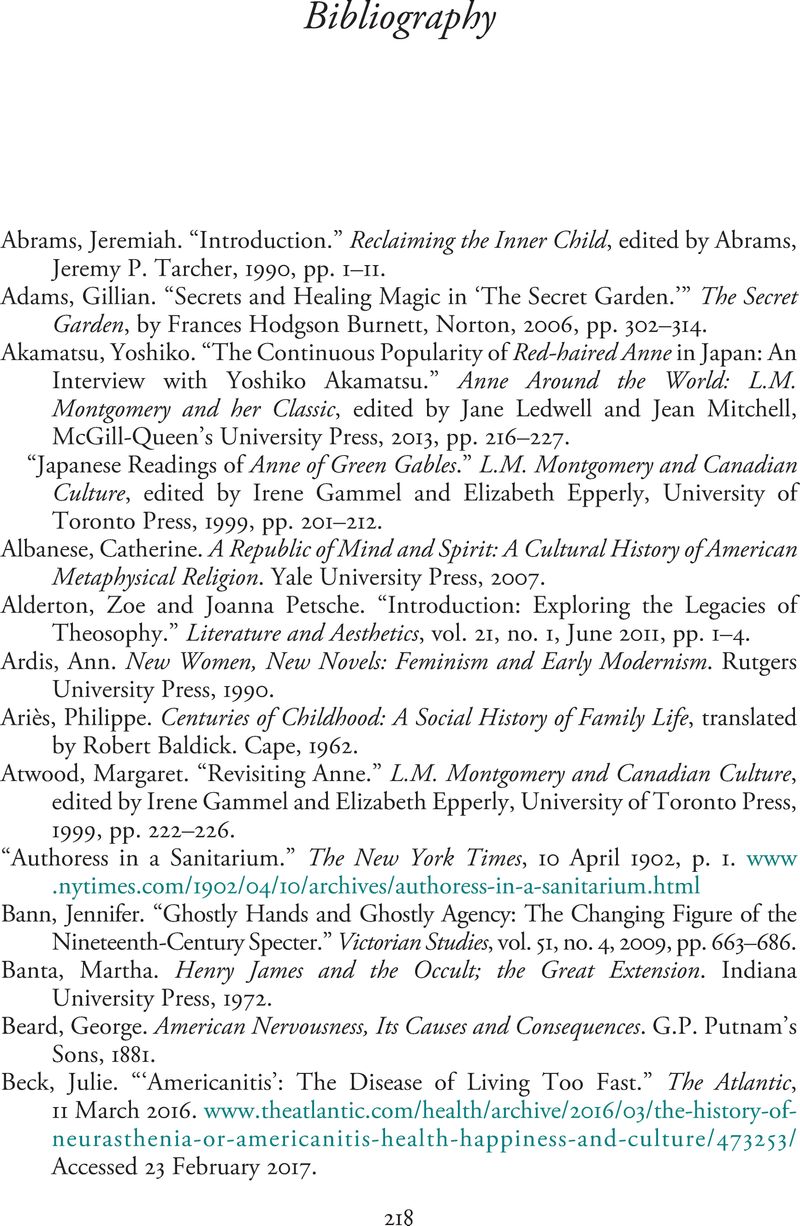 Children's Literature and the Rise of ‘Mind Cure'
Children's Literature and the Rise of ‘Mind Cure' Book contents
- Children’s Literature and the Rise of “Mind Cure”
- Cambridge Studies in Nineteenth-Century Literature and Culture
- Children’s Literature and the Rise of “Mind Cure”
- Copyright page
- Dedication
- Contents
- Illustrations
- Acknowledgments
- Introduction
- Chapter 1 The Inner Child in Frances Hodgson Burnett’s Little Lord Fauntleroy and Sara Crewe
- Chapter 2 Fauntleroy’s Ghost
- Chapter 3 Rewriting the Rest Cure in Frances Hodgson Burnett’s The Secret Garden
- Chapter 4 Sunshine and Shadow
- Chapter 5 New Women, New Thoughts
- Epilogue
- Notes
- Bibliography
- Index
- Cambridge Studies in Nineteenth-Century Literature and Culture
- References
Bibliography
Published online by Cambridge University Press: 10 December 2020
- Children’s Literature and the Rise of “Mind Cure”
- Cambridge Studies in Nineteenth-Century Literature and Culture
- Children’s Literature and the Rise of “Mind Cure”
- Copyright page
- Dedication
- Contents
- Illustrations
- Acknowledgments
- Introduction
- Chapter 1 The Inner Child in Frances Hodgson Burnett’s Little Lord Fauntleroy and Sara Crewe
- Chapter 2 Fauntleroy’s Ghost
- Chapter 3 Rewriting the Rest Cure in Frances Hodgson Burnett’s The Secret Garden
- Chapter 4 Sunshine and Shadow
- Chapter 5 New Women, New Thoughts
- Epilogue
- Notes
- Bibliography
- Index
- Cambridge Studies in Nineteenth-Century Literature and Culture
- References
Summary

- Type
- Chapter
- Information
- Children's Literature and the Rise of ‘Mind Cure'Positive Thinking and Pseudo-Science at the Fin de Siècle, pp. 218 - 234Publisher: Cambridge University PressPrint publication year: 2020


